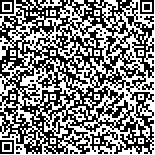下载中心
优秀审稿专家
优秀论文
相关链接
摘要

星载激光测风雷达是探测全球风场的重要工具。目前由欧洲空间局研制的全球首颗星载激光测风卫星Aeolus已于2018年8月顺利升空部署,美国和日本也在积极论证和研制新的星载激光测风雷达技术体制,分别采用混合多普勒测风雷达HDWL(Hybrid Doppler Wind Lidar)和相干多普勒测风雷达CDWL(Coherent Doppler Wind Lidar)技术体制。本文简要介绍了Aeolus、HDWL和CDWL技术体制,并根据前人的研究成果,从数据获取率和获取量、风场探测精度以及对数值预报系统的改进作用对这3种技术体制进行了评估综述。研究结果表明以气溶胶和云滴粒子为示踪物进行的大气风场探测具有更高的探测精度,其测风精度约为0—2 m/s,其探测范围为边界层和对流层下层;以大气分子为示踪物的大气风场探测精度相对较低,其精度约为1—3 m/s,但其具有更大的探测范围。根据3种星载激光测风雷达技术体制,Aeolus和HDWL具备探测边界层和对流层的大气风场能力,CDWL只能获取边界层至对流层下层的风场数据,HDWL体制相比Aeolus和CDWL,能够获取更多的风场探测数据,且能够实现较高精度水平风场矢量探测数据。OSSE(Observing System Simulation Experiments)实验表明,将星载激光测风雷达风场探测资料同化到数值预报系统之后,预报结果得到明显的改善,在双星联合探测体制下,更大的风场探测范围相比径向风场的探测更有助于提升数值预报系统的精度,而径向风场的探测将更好地提升星下点的探测精度。HDWL体制相比Aeolus和CDWL,由于其探测范围更广,且可以实现径向风速的探测,故推测其对数值预报系统的精度的提升作用更明显。对这3种技术体制的分析评估可为发展中国的星载激光测风雷达技术体制提供参考。
Spaceborne Doppler Wind Lidars (DWL) are powerful tools in global wind observations. The first spaceborne Doppler wind lidar designed by European Space Agency (ESA) was launched successfully in August 2018. Meanwhile, the US and Japan provide huge resources in the demonstration and development of new technical systems of spaceborne DWLs, which are Hybrid DWL (HDWL) and Coherent DWL (CDWL), respectively. The technical systems of Aeolus, HDWL, and CDWL were assessed from three aspects, including the data acquisition rate or measurement number, the accuracy of wind observations, and the role played in improving the Numerical Weather Prediction (NWP) results to provide reference for our country to develop our own spaceborne DWL.We introduced the three technical systems briefly because the three technical systems of spaceborne DWLs are relatively different. These technical systems were assessed from the three aspects using previous research results.The three technical systems, which consist of Aeolus, HDWL, and CDWL, were assessed through the data acquisition rate or measurement number. Previous studies illustrated that the profiles of measurements obtained by HDWL is twice as much that of CDWL, and four times as much that of Aeolus. The data acquisition rate of CDWL is low due to its coherent-detection technology.The three technical systems are also assessed through the accuracy of wind observations. The main factors, which affect the accuracy of wind observations, are Poisson noise and atmospheric heterogeneity. Previous studies demonstrated that wind observations obtained by coherent-detection technology or the Mie channel of Aeolus has high accuracy (about 0—2 m/s) and traced by aerosol or cloud particles. However, its observations only cover about 30% of the total observations. The accuracy of wind observations obtained by direct detection is relatively low (about 1—3 m/s) and traced by molecules. Its observations can cover about 70% of the total observations. Generally, the global wind distributions can be well detected by combining coherent and direct detection.Observing System Simulation Experiments (OSSEs) provide a quantitative evaluation of new observing systems for the improvement of NWP. ESA, the US, and Japan verified the positive impact of Aeolus, HDWL, and CDWL on NWP results through OSSEs. Studies also indicate that uniform spaceborne DWL profile coverage is more important than the observations of horizontal vector wind using joint observations with two Aeolus-type spaceborne DWLs. Meanwhile, the observations of horizontal vector wind perform better in the improvement of the forecast results close to the satellite tracks than the observations of line-of-sight wind observations.HDWL is expected to achieve more favorable improvement of NWP forecast due to its larger data coverage and ability to observe the horizontal vector wind. The conclusions are drawn based on previous studies. Furthermore, HDWL and CDWL are still on the demonstration phase. Their parameters may be justified in the future, affecting the accuracy of wind observations. Future research on the comparison of the technical systems of spaceborne DWLs should be developed.

